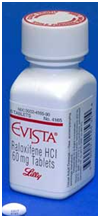By David Hricik, Mercer Law School
The USPTO is seeking comments on amending certain PTAB Rules of Practice. While it proposes many amendments, two seem key: one for instituting on all challenged claims and grounds (to conform with SAS Institute Inc. v. Iancu, 138 S. Ct. 1348 (2018)) and the other to eliminate the presumption at institution favoring the petition as to testimonial evidence. Comments will be accepted through June 26, and the notice is available here.
As to the first major proposal, as amended the PTAB will institute an IPR, PGR, or CBM proceeding on all claims and all grounds if preponderant evidence in the petition shows at least one claim is unpatentable. The Office explained in part:
In light of SAS, the Office provided guidance that, if the Board institutes a trial under 35 U.S.C. 314 or 324, the Board will institute on all claims and all grounds included in a petition of an IPR, PGR, or CBM. To implement this practice in the regulation, the first proposed change would amend the rules of practice for instituting an IPR, PGR, or CBM to require institution on all challenged claims (and all of the grounds) presented in a petition or on none. Under the amended rule, in all pending IPR, PGR, and CBM proceedings before the Office, the Board would either institute review on all of the challenged claims and grounds of unpatentability presented in the petition or deny the petition.
As to the second, the USPTO spent a lot more ink explaining it, writing in part:
In April 2016, after receiving comments from the public and carefully reviewing them, the Office promulgated a rule to allow new testimonial evidence to be submitted with a patent owner’s preliminary response. Amendments to Rules of Practice for Trials Before the Patent Trial and Appeal Board, 81 FR 18750 (April 1, 2016). The Office also amended the rules to provide a presumption in favor of the petitioner for a genuine issue of material fact created by such testimonial evidence solely for purposes of deciding whether to institute an IPR, PGR, or CBM review. Id. at 18755–57.
Stakeholder feedback received in party and amicus briefing as part of the Precedential Opinion Panel (POP) review in Hulu, LLC v. Sound View Innovations, LLC, Case IPR2018–01039, Paper 15 (PTAB Apr. 3, 2019) (granting POP review), indicated that the rule has caused some confusion at the institution stage for AIA proceedings. For example, certain stakeholders have indicated that the presumption in favor of the petitioner for genuine issues of material fact created by patent owner testimonial evidence also creates a presumption in favor of the petitioner for questions relating to whether a document is a printed publication. Additionally, the Office has concerns that the presumption in favor of the petitioner may be viewed as discouraging patent owners from filing testimonial evidence with their preliminary responses, as some patent owners believe that such testimony will not be given any weight at the time of institution.
Section 314(a) of 35 U.S.C. provides that ‘‘[t]he Director may not authorize an inter partes review to be instituted unless the Director determines that the information presented in the petition. . . and any response . . . shows that there is a reasonable likelihood that the petitioner would prevail with respect to at least 1 of the claims challenged in the petition.’’ 35 U.S.C. 314(a). Thus, the statute provides that a petitioner is required to present evidence and arguments sufficient to show that it is reasonably likely that it will prevail in showing the unpatentability of the challenged claims. Hulu, LLC v. Sound View Innovations LLC, Case IPR2018– 01039, Paper 29 at 12–13 (PTAB Dec. 20, 2019) (citing 35 U.S.C. 312(a)(3), 314(a)). For a post-grant review proceeding, the standard for institution is whether it is ‘‘more likely than not’’ that the petitioner would prevail at trial. See 35 U.S.C. 324(a). In determining whether the information presented in the petition meets the standard for institution, the PTAB considers the totality of the evidence currently in the record. See Hulu, Paper 29 at 3, 19.
In this notice of proposed rulemaking, the Office proposes to amend the rules of practice to eliminate the presumption in favor of the petitioner for a genuine issue of material fact created by testimonial evidence submitted with a patent owner’s preliminary response when deciding whether to institute an IPR, PGR, or CBM review. Thus, consistent with the statutory framework, any testimonial evidence submitted with a patent owner’s preliminary response will be taken into account as part of the totality of the evidence.
Interestingly, the Office specifically asked for input as to implementation, stating “the Office may apply any rule changes, if adopted, to all pending IPR, PGR, and CBM proceedings in which a patent owner’s preliminary response is filed on or after the effective date.”
 Eli Lilly v. Teva Pharmaceuticals (
Eli Lilly v. Teva Pharmaceuticals ( Central Admixture Pharmacy Services v. Advanced Cardiac Solutions (
Central Admixture Pharmacy Services v. Advanced Cardiac Solutions (